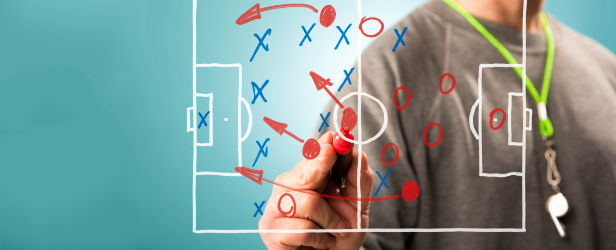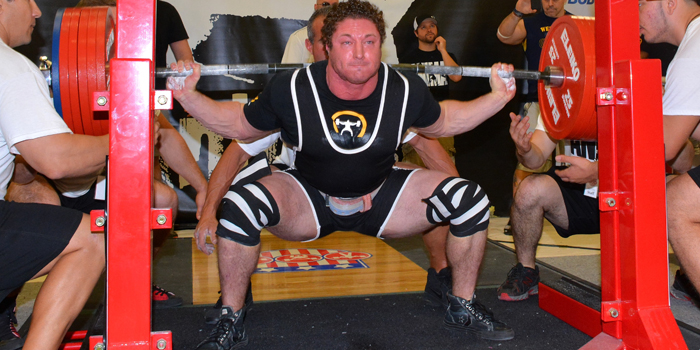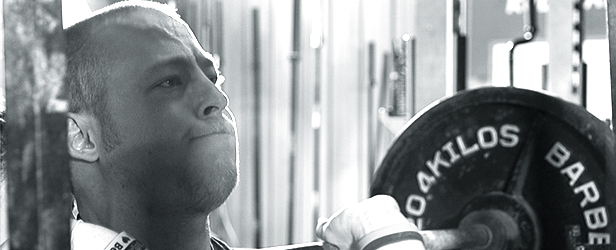
I will never forget when I went to a seminar in Washington, D.C., with Dave Tate. It wasn't an elitefts™ seminar. Dave was one of many speakers and had invited me down as his guest. The seminar had some good information and good presenters, and as the day wrapped up, all the presenters took the stage for some Q&A time. Before anyone asked a question, Dave said, "No one should ask the stupid f*@king question, 'What is the best lift?'"
So a few questions into the Q&A, some guy stood up and said, "If you could only do one exercise, what would it be?" The first few presenters went with the clean, squat or Turkish get-up. Then the microphone was handed to Dave. I knew that this would be good, but Dave's answer surprised even me. He held the microphone, looked up, and said, "I would fornicate." OK, he didn't use that exact noun, but the word started with an 'f' and I don't like to use it in my writing.
The reason I begin with this story is that everyone wants to hear squat. And in all honesty, while it's a stupid question, the answer is generally accepted as squat. So let's talk squatting.
Squatting Strength Coach Style
I'm a strength coach for a university. This means that in my 2000-square-foot weight room, Monday looks like this:
- 6:00 a.m. volleyball
- 6:45 a.m. cheerleading
- 7:45 a.m. football
- 8:45 a.m. football
- 9:45 a.m. football
- 10:45 a.m. football
- 11: 45 a.m. football
- 1:00 p.m. women's soccer
- 2:00 p.m. men's soccer
- 3:30 p.m. men's basketball
There's probably a few extra lifts thrown in there throughout the day as well.
Tuesdays, Thursdays, and Sundays are just as busy. So on any given day, our athletes and my staff are performing between 1000 and 5000 squats. I love when a strength coach tells me that every squat in his facility is perfect. I'll promise you that most of the ones I see aren't! We're trying to improve the athletes through training, and as far as 'bang for your buck' exercises, squats are very near the top. I'll go over some of the squat variations that we use, why we use them and why anyone who competes in those lifts will think that I'm an idiot.
Box Squat
I use and have used the box squat with great success for the following reasons:
- We can control depth. If the athlete can't get down to parallel without falling, we will move them up an inch or so until we strengthen the hamstrings enough to get them down.
- We can teach the athlete to "sit into the hamstrings."
- During the in-season, box squats are a great way to reduce soreness in the squat. With fall sport athletes who didn't train with us during the summer, I will use the box squat with them until we have a by-week. Then I'll add back squats in because I'm not as concerned with soreness.
- It's easy to make adjustments on the box. We can actually move the athlete when he is on the box. So if an athlete's knees are collapsing, we can manually fix this during the movement.
- With all this, remember that we aren't powerlifters and we will probably never look like powerlifters box squatting. However, we should be improving the movement every time we perform it.
Front Squat
The front squat is a staple of our program. Even when we aren't training, this exercise is in our warm up.
- It is much easier to get depth with a front squat than with a back squat. So perform front squats.
- Due to the upright position of the upper body, the hip mobility must improve in order to perform the front squat effectively. This means that just front squatting will make us more mobile.
- Pyros Dimas did this exercise, therefore we do!
- This exercise was made the king of all exercises a few years back by another strength coach. While I get his point, I respectfully disagree. Yes, the front squat can be a little safer at times than the back squat, but nothing will improve the athlete mentally, physically, emotionally or even spiritually than a heavy back squat. Use this exercise, but it will limit your strength gains because the weight will always be less than the weight of a traditional back squat.
Back Squat
The back squat is king. If you want to be strong, squat.
- As I stated while talking about the front squat, it takes a different mindset to heavy back squat, so create that mindset within your athletes.
- Sitting down with a heavy weight and standing back up will build immense reversal strength. This is one reason why I like back squatting in the off-season more than box squatting.
- As I watch my 17-month-old son squat, I'm reminded that this is the most primal movement humans may have and all we do is mess it up by watching bad action films and playing video games.
- Everyone loves to talk about a weak core. Well, the reason that the back squat can get a bad rap is because it's dangerous. The athlete can fall forward, try to recover the lift, and end up performing a good morning with the lift. Yes, this is a risk, but as with most things in life, the risk is greater because the reward is greater. If you can build this lift, the "core" will never be weak. I have never met anyone who squats over 600 pounds raw and has a "weak core."
Goblet Squat
Thank you, Dan John, for this one.
- If you have an athlete with bad mobility in the hips and ankles, the goblet squat is probably the single best way to fix this. I was speaking with a friend (who is much smarter than I am) and he was addressing every muscular imbalance in each athlete that he has (he has fewer athletes than I do). I stopped him and said, "There is no doubt that your knowledge of anatomy surpasses mine. What if I improve my athletes' ability to sit into a squat with good form and stand up? Won't this address 90 percent of these issues?" His answer was awesome—yes.
- The goblet squat is a great way to assess what mobility issues an athlete may have. On day one, have your athletes perform a goblet squat and you'll be able to see what is going on with their body.
- The goblet squat is great to use as a finisher because the full range of motion will keep the athlete mobile. Try this one—after a heavy squat day, have the athlete perform 3 X 10 goblet squats supersetted with 3 X 10 hanging leg raises. This will create some nice traction on the leg raise while accelerating blood flow through the entire muscular system.
Overhead Squat
This is the red-headed stepchild of squatting.
- I use this with our athletes but rarely as a strength exercise. The idea is to work on mobility.
- The overhead squat is great in warm-up and cool down periods.
- I know some Olympic coaches may get mad at me for this, but I feel that the heavy overhead squat is fairly heavy on the risk side of the risk versus reward aspect. We will be limited by what load the athlete can handle. Our athletes are not Olympic lifters, so the chance of an injury is greater. Yes, I know that there are studies stating that Olympic lifting is safe. My question is, what about this lift with people who aren't Olympic lifters?
- Use this squat as you see fit, but I don't think that it's a great strength builder.
This covers the big five squats from a strength coach's perspective. I realize there are scores of other squat variations that are either unilateral or bilateral in different plains, but these are the big squat movements as I see it. My advice is to study each and use what is appropriate at the right time. Some coaches have told me that they don't use one type of squatting. In my opinion, this is crazy. We must use what we have to improve the athlete. That doesn't mean you have to test each lift, but if it improves the athlete, why not use it? A perfect example is the box squat. Use it for technique if you aren't comfortable with using heavy weight on that exercise.
Here's a final story to lead us out. About four years ago, my wife, one of my staff members, my first son (long story ... I only have one son, but I've found a son and daughter to call my own) and I traveled to elitefts™ for an UGSS or LTT. Jim Wendler was there, and we were just talking to him about life. Whenever I see Jim, he makes me laugh. One person who was with us asked Jim why he sometimes squats in chucks and, at other times, squats in Olympic shoes. Jim's answer was exactly what I expected from him. He said, "They can remove a pig's heart, remove your heart, place the pig's heart in your body, attach it, and you can live. And you're worried about a one-inch heel on your shoe?"
The answer must not have been enough because this same person said, "But how do you decide when to wear each pair?" Jim replied, "The ones that are on top are the ones I wear." The point is teach good technique and don't major in the minor.














I can't disagree that the squat is one of the most primal movements, but in my opinion the deadlift is the king of primal movements.
I am not a strength coach, but I have taught a lot of people to squat properly and think that the zercher, like box squat, can help a person "sit back on the hamstrings" while allowing the full mobility of the goblet squat. In my opinion, it's also less risky than the front squat. It can also have a great cardio vascular component...ever do a zerchers where you have to pause at the top to get a few breathes? The weight lays against your stomach and cuts your lung capacity. Using them at the end of a squat day, for 5-8 reps for 3 sets forces efficiency of aerobic and anaerobic systems. The previous can also be a limiting factor if you need to increase your GPP. The amount of weight the athlete can hold (or carry) is the other main limiting factor.
So what do you think about Zerchers?
You are a wise man!
Good for you if that is working. I love everything about having fun in your training. I would say this probably will not work forever for you and at some point you will need to get a little more organized with what you are doing.
Maybe plan half your lifts to start and do the other half how you have been. As you progress more I think you will begin to love the planning process.
Joel
I apologize. I thought it was you I learned this from. Hmm well someone did that a long time ago and I heard they like it but it never really worked well for me.
Maybe Buddy did it?